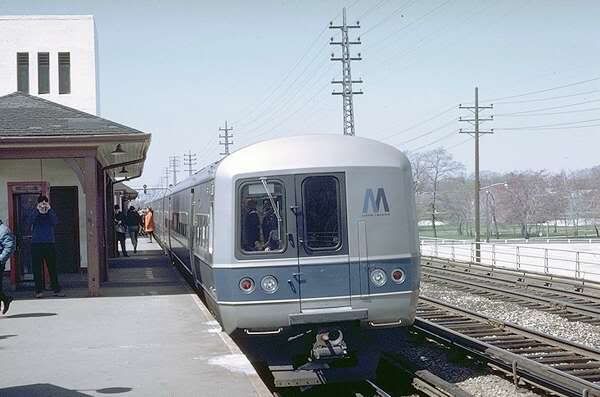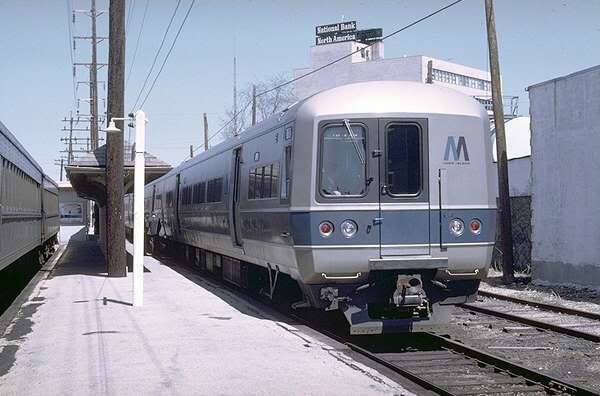The M-3's had manual roll signs. They were at the top of the engineers' windshield and were adjusted with a crank. The LIRR even negotiated with the BLE to have the engineers change the signs. As they broke and got stolen they were not replaced.
The M-1's came with roll signs of their own, which were much more ambitious than the M-3's. They had destinations such as Riverhead, JFK Airport and World Trade Center. The signs were mounted above the windshield and next to each door both inside and out.
Unlike the M-3 signs, the M-1 ones were controlled automatically and were tied into an "Identra" system. A two letter code would be dialed into the Identra unit which was located in the radio locker. The train was then supposed to signal its destination, magnetically, to wayside receivers which would line its route. The code would also set the destination signs using a primitive bar code on the sign fabric. Identra didn't work out and was removed in 1972 along with the M-1roll signs.
An interesting note is that the only place that had an Identra receiver installed on the LIRR was Valley.
M-1's also had a throttle position, ATO, that would respond to speed control codes to control the speed of the train. The engineer would then only have to stop for stations and signals. This too was removed to avoid maintenance costs. To the end, every M-1 had an ATO position on its controller. After its removal, the position would just apply the brakes.
------------------------
The Long Island Tool
"... overzealously discharges his duties;
...a "tool" of the administration"




